Through our previous blogs, we have talked about marine animal strandings and the importance of a stranding network to help support these stranded animals. What you haven’t heard about is what goes on behind the scenes to make such a network successful.
The Ocean Watch Network in Goa is a perfect example of a successful Marine Megafauna Stranding Network.
Who is Ocean Watch?
A Marine Stranding Response Network requires a few key roles to be filled by individuals or organizations for it to be successful and function smoothly.
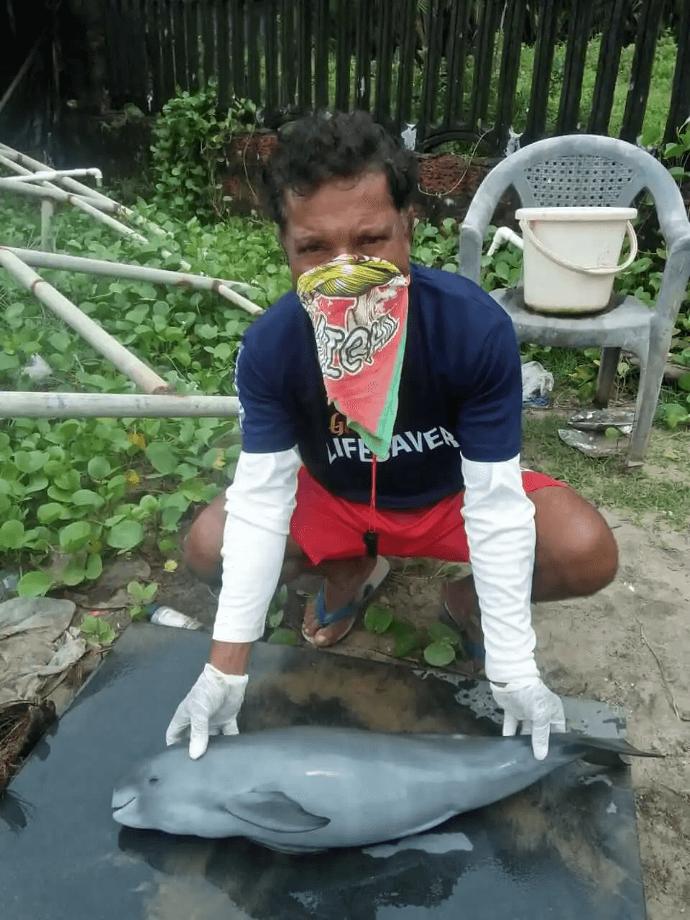
1. First Responder
First responders are the people who first interact with a stranded animal. These people can be anyone who spends time along the coast and has eyes on the beach 24×7. The Goa stranding network is fortunate to have 600 lifesavers who are part of the Drishti Marine team patrolling the beach throughout the day and night. Drishti has offered this service as part of their CSR, in addition to human lifesaving. In other states fishers, citizen volunteers, tourists, shack owners, water sports operators, or anyone using the beach space can be first responders.
First responders have a key role to play in a network as they are the first to interact with the animal. In ideal situations, these individuals have the capacity to provide first aid to a live animal and have been trained in handling the animal so as to keep it as calm as possible till officials and veterinary assistance arrives. These individuals are also simultaneously responsible for reporting the stranding to the officials and veterinary support teams so they can come prepared based on the species, injury, and general status of the animal.
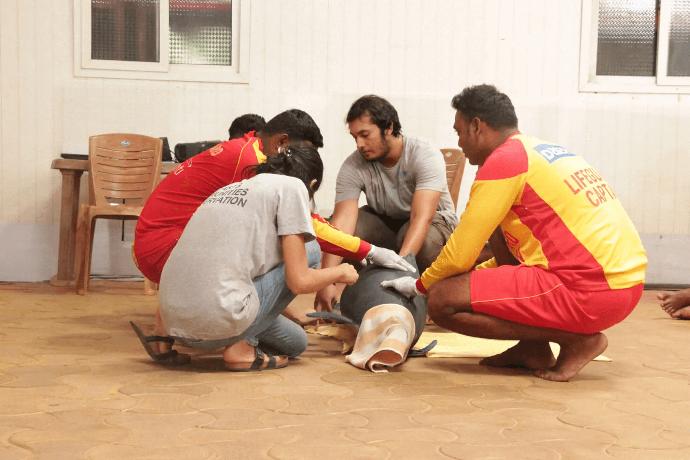
2. Trainer
To provide first responders with the right capacity to be able to aid a distressed animal or collect data from a deceased animal, skilled trainers are required. This role is usually taken up by researchers or veterinarians that know how to handle these animals. In Goa, the Terra Conscious team has built a structured training program for first responders with consultations from experts in the field. The benefit of having an organization that specializes in communication conducting the training is that they are able to better understand and communicate the subject matter with the first responders.
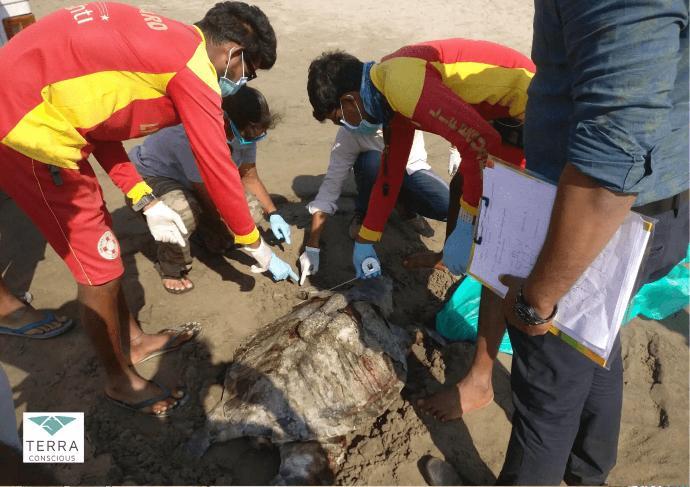
3. Coordinator
A network also requires a coordinator who makes sure that the protocol is being followed when a stranding occurs. They also make sure that the relevant officials and support reach the animal once reported by the first responders.
This role is taken on by Terra Conscious as well and has helped them build a relationship with all partners of the network from individual lifesavers to forest department officials.
4. Governing body
Marine megafauna like Cetaceans (whales, dolphins, and porpoises) and Sea Turtles come under Schedule I of the Wildlife Protection Act (WPA) of India. This means that they receive the same protection as that of a Tiger. In keeping with the WPA, all stranded animals live or deceased need to be attended to and recorded by the state Forest Department (FD).
The Goa Forest Department is notified by the Drishti lifesavers (first responders) and Terra Conscious as soon as a stranding is reported, and based on the status of the animal and in consultation with veterinarians they advise the network on how to proceed.
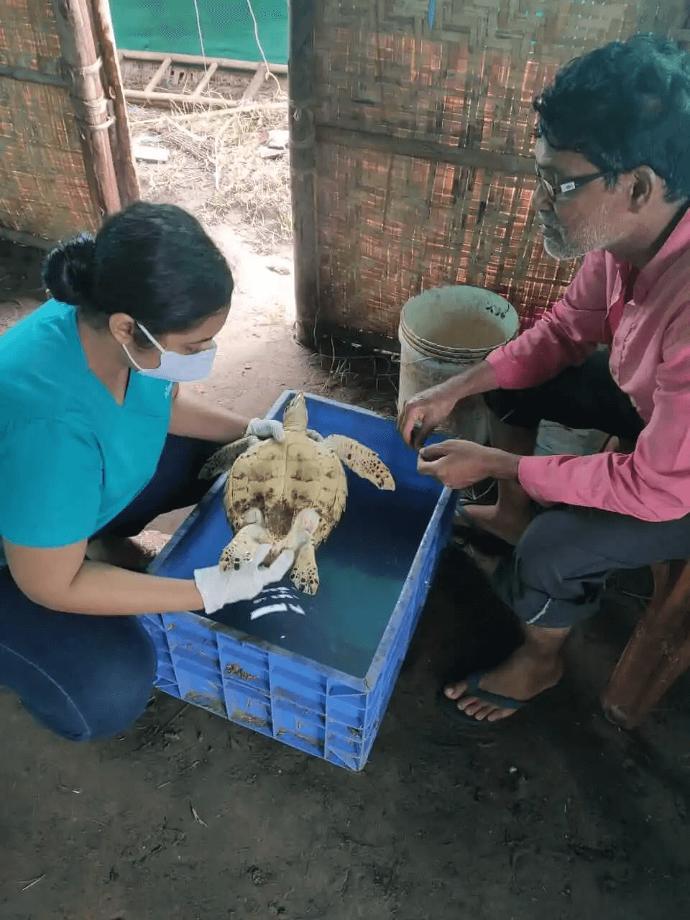
5. Veterinary assistance
Veterinary support is key for any Marine Stranding Network. A trained veterinarian would be able to check a live animal for any injuries, internal or external and identify the potential cause for stranding. This can then be treated and after the animal has fully recovered it can be released back into the wild. For a deceased animal, it is important that a necropsy is conducted to identify the potential cause of death. This data can help conserve these animals and curb major threats to their survival. Data from deceased animals can also help advise policy on better management of areas used by these charismatic species, in turn conserving them and many other animals that also use these ecosystems.
This very important role is played by ReefWatch Marine Conservation in Goa. Through the last year as part of this network, they have been able to identify key threats to these animals and are working toward conservation measures to protect them.
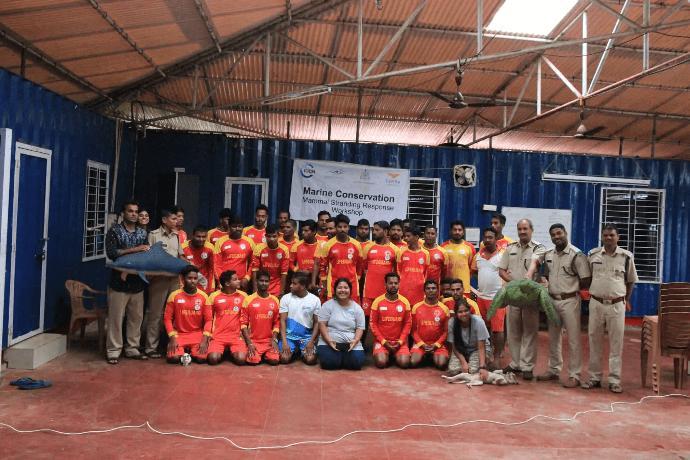
The Goa Marine Stranding Network, Ocean Watch was set up by Terra Conscious with funding support from IUCN India through their Mangroves for future fund, it has been in place since June 2017 and has grown and evolved with each passing year. It is now a model network that can be adapted and replicated globally!
To know more about Ocean Watch you can follow Drishti Marine, Terra Conscious, ReefWatch, Goa Forest Department, and Jnana Foundation on Instagram or Facebook. You can find more about Ocean Watch here.
If you are interested in contributing to this network or would like to collaborate to create such a network around where you live do reach out to us at impact@jnanafoundation.org